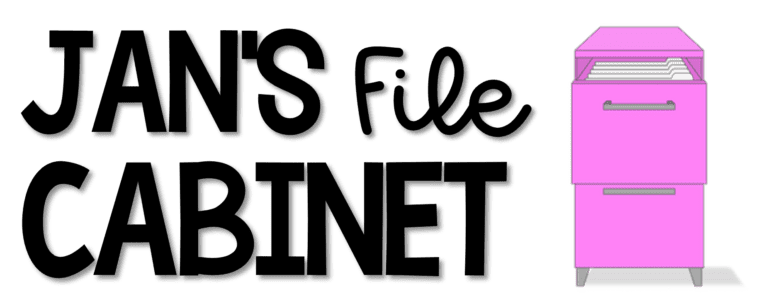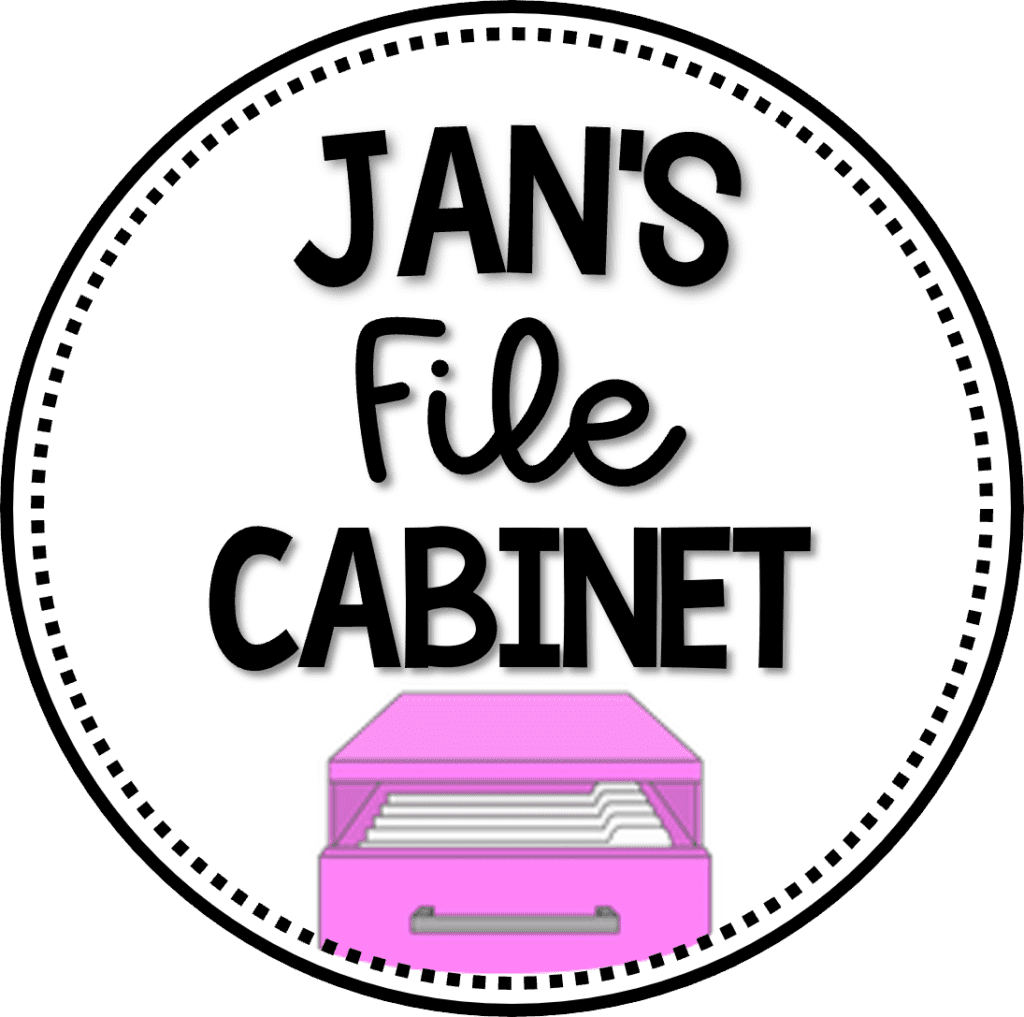Independent reading involves skills that our intermediate and middle-level students may or may not have when they come to us. As language arts teachers, it is our responsibility to set the stage for students to be able to read and comprehend on their own.
One of our main goals as language arts teachers is to help our students read grade-level material independently. This means being able to read and comprehend it on their own.
There is something to be said for reading to students. It is beneficial and essential. But students must be able to read texts independently, and we must help them build those skills.
Recent studies show many students are behind in their reading. Given the time constraints and all that we need to address in language arts, how do we help older students be successful independent readers?
Table of Contents
Toggle4 Areas that Support Independent Reading
Throughout my years of teaching (almost three decades now- yikes!) I have found that four areas give me the biggest bang for my buck when helping students improve their reading skills. When I intentionally focus on these areas throughout the school year, my students make leaps and bounds as independent readers.
Focusing on these four areas also helps learners develop a love of reading through ample practice opportunities and the support they need to feel successful and build confidence. We know that they want to read more when they are successful with reading.
These areas are:
- Explicitly teaching reading comprehension skills and strategies
- Increasing students’ word knowledge
- Implementing a consistent sustained silent reading program
- Providing opportunities for authentic reading response
Of course, other aspects of reading come into play as well, but given time constraints, these areas have had the most significant impact on the upper intermediate and middle school students I’ve worked with over the years.

1. Reading Comprehension Skills and Strategies
During my first 17 years of teaching, I worked with learners with significant reading issues.
I watched and listened to how they read and realized that many of these students were not actively reading. They were reading the words for the most part, but many didn’t comprehend what they were reading.
Hands down, reading comprehension is one of the most complex sets of skills to teach because it is so abstract. How do you teach students what is supposed to be going on in their heads while they read?
The answer, I have found, is to make it concrete for them by modeling skills and strategies and giving them time to try them out on their own.
Model Reading Comprehension Strategies
Reading comprehension strategies are techniques we use to better understand what we are reading. These strategies are important because reading involves more than just recognizing words; it requires us to actively engage with the text to derive meaning.
Intermediate and middle school students need to continue practicing these strategies as the complexity of their texts increases:
- Questioning
- Predicting
- Visualizing
- Connecting
- Inferring
- Identifying Importance
- Synthesizing
The more actively students read the more independent they become with their reading. To learn more about these strategies, read What Reading Comprehension Strategies Do Good Readers Use?
Expose Students to the Literary Genres
Literary genres are categories that distinguish between written works based on stylistic criteria. The main literary genres include fiction, nonfiction, folktales, poetry, and drama. There are also subgenres that fall under each of these main genres.
Some fiction subgenres include realistic fiction, historical fiction, supernatural, action-adventure, mystery, fantasy, and science fiction. Some subgenres of nonfiction include informational, autobiography, biography, and memoir. Folktales include fairy tales, tall tales, legends, fables, and myths. Poetry includes free verse, ballad, ode, epic, elegy, and many others. Drama subgenres include tragedy, comedy, farce, melodrama, musical, and some others.
Readers who understand the genres are more successful when choosing preferred reading material. This produces less frustration and can be a motivator to continue reading. Also, understanding genres can help students analyze and discuss texts more deeply because they better understand their characteristics.
Read How to Build Your Classroom Library on the Cheap for ideas on how to procure free and inexpensive books.
Teach Text Structures for Fiction, Nonfiction, and Poetry
Understanding text structures in fiction, nonfiction, and poetry helps readers navigate and interpret different types of literature more effectively. Text structure refers to how a piece of writing is organized, and recognizing these structures can enhance a reader’s comprehension and engagement with the content.
For fiction, text structure includes linear plot structure, flashbacks and foreshadowing, and epistolary structure. The common text structures for nonfiction include description, sequential order, chronological order, comparison and contrast, cause and effect, problem and solution, and question and answer. The common structures for poetry include stanzaic structure, rhyme and meter, enjambment and line breaks, and imagery and symbolism.
When students can identify text structures, it helps them determine an author’s purpose in writing the text, the author’s perspective, themes, and the main or central ideas.
You can access this FREE PRINTABLE TEXT STRUCTURES HANDOUT and other goodies in my FREE RESOURCE LIBRARY by joining my email list with the form below.
Teach How to Determine the Main or Central Ideas of a Text
Determining a text’s main ideas (5th grade and below) or central ideas (6th grade and above) is a crucial skill that helps readers comprehend and engage with the content effectively. Main ideas represent the primary points or overarching themes around which the text is organized.
Identifying a text’s main or central ideas helps students become more independent with their reading because it helps them focus on the most important information and organize their thoughts. Understanding main or central ideas can also help students think about and discuss what they read more deeply because they can better evaluate a text’s evidence, arguments, and examples.
For access to materials that help build reading comprehension skills, check out 5 Websites with Free Reading Passages and Question Sets.
2. Word Knowledge
I have always been fascinated by words. I was absolutely thrilled with the Webster’s Collegiate Dictionary I received for Christmas when I was eight years old.
And yes, I still have it!
But let’s face it; most kids are not as excited about words as we would like them to be. And we NEED them to be excited since word knowledge is an essential factor when it comes to independent reading.
Improving word knowledge has a direct and positive effect on reading comprehension. The more words a child knows, the more he or she can understand the text. This makes sense, right?
Whole group and partner games are an engaging way for learners to explore words. Sorting and categorizing words is another great way to work with words. Incorporating them into learning centers, as bellringer activities, and as early finisher options are all great ways to improve students’ word knowledge.
Build a Word Knowledge Toolbox
There are six areas (or tools) of word knowledge that can have a significant impact on the reading comprehension of our intermediate and middle school students:
- Greek and Latin roots
- Prefixes and suffixes
- Homonyms, homophones, and homographs
- Context clues
- Synonyms and antonyms
- Denotation and connotation
Becoming familiar with these areas of word knowledge and knowing how to use these tools can help students expand their vocabularies, identify word relationships, understand technical terminology, and make inferences about the meanings of unfamiliar words. It helps them become independent readers because it improves their overall reading comprehension.
For more information about each of these areas, read How to Build a Word Knowledge Toolbox.
Implement the List-Group Label Strategy
One of my favorite ways for students to explore words is with the List-Group-Label strategy. This effective and engaging strategy helps learners hone their critical conceptual and processing skills by listing, grouping, and labeling words. This strategy requires our brains to categorize, which is how we integrate, store, and recall information.
In addition, it helps to activate and deepen students’ prior knowledge of a topic. It can also help them better understand the parts of speech and how language works in general. Therefore, it helps students improve their independent reading.
The strategy is easy to implement with very little prep work. Here are the steps:
- Teachers or students compile a list of vocabulary terms.
- Using graphic organizers, students group the words into categories based on word parts, use or purpose, the number of syllables, or similar meanings.
- Students create labels for their categories based on the characteristics of the words in each group.
Read How to Improve Vocabulary with the List-Group-Label Strategy for more information.
Explore Words with the Frayer Model
The Frayer Model is a graphic organizer that helps readers understand and remember vocabulary words by breaking down their components, defining their meanings, and placing them in context. It is a visual tool that encourages deeper engagement with new terms and concepts.
This graphic organizer is typically divided into four quadrants with space for students to record definitions, word characteristics, examples, and non-examples. However, the required information can be modified to include illustrations, synonyms, antonyms, or anything else you want students to record.
You can access this FREE FRAYER MODEL TEMPLATE ON GOOGLE SLIDES and other goodies in my FREE RESOURCE LIBRARY by joining my email list with the form below.
3. Sustained Silent Reading
Picture this… Your classroom is so quiet you can hear each one of your students breathing. Each student is reading a good-fit book. Everyone is focused, and you’re able to conference with them one-on-one while the others continue to read silently.
Your students are motivated to read and choose new books as soon as they finish the ones they are reading without bribes or incentives for reading. They do it because they WANT to.
It sounds magical, doesn’t it?
Well, it is magical, and this has been the scenario in my classroom for the past ten years.
I’ve heard many teachers say they struggle with implementing sustained silent reading and have given up on it. But, effective SSR is attainable with the right tools and mindset.
And if I can do it, so can you.
It’s a simple fact: if we want students to be able to read independently, we need to give them uninterrupted time to read each day. We also need to provide them with the guidance and support they need to build confidence and achieve success.
Implement a Routine for SSR
Sustained Silent Reading (SSR) is a period of uninterrupted silent reading time incorporated into the school day. During this time, students choose their books and read solely for pleasure.
To be clear, SSR is not meant to replace reading instruction and assessment. Instead, it should be added to the existing curriculum so students can experience a broader range of texts.
Implementing SSR as a routine, especially for students, offers several specific benefits that contribute to their overall academic and personal development.
First, regular routines help students form habits. When SSR becomes a part of their daily schedule, it becomes more ingrained and natural, making it more likely that they will continue the practice beyond the routine.
Another benefit of establishing a routine for SSR is that it helps students gradually extend their stamina for reading. Over time, they become better at focusing on reading materials for longer durations, which can positively impact their ability to read independently.
Finally, when students are part of a routine, they develop a sense of ownership over their reading time. They begin to see reading as a personal activity that contributes to their growth rather than a chore imposed by teachers or parents.
Conduct Mini Lessons for SSR
Mini-lessons for sustained silent reading can help teachers guide students in developing strong reading habits, comprehension skills, and a deeper appreciation for reading. Here are some mini-lesson ideas that teachers can incorporate:
- Choosing appropriate reading material
- When to abandon a book
- Genre exploration
- Silent reading etiquette
- Setting reading goals
- Active reading strategies
- Building reading stamina
- Vocabulary strategies
- Literary elements
- Text structures
- Sharing about what they read
These mini-lessons can be adapted and expanded based on the grade level, students’ needs, and the specific goals of the SSR program. The goal is to foster a positive and enriching reading environment while helping students develop valuable reading skills and to grow as independent readers.
Monitor Reading Habits and Progress
My two favorite ways to monitor progress during SSR time are Status of the Class check-ins and one-on-one conferences.
When conducting a Status of the Class check-in, I observe each student as they begin reading. This involves looking over their shoulders to see book titles, what pages they are on, and which genres they’ve chosen. I take note of this information to keep track of their progress and habits.
Sometimes, I also ask a quick question about their reading to see how they are engaging with the text. For example, I might ask what they think of the book so far or if they have any predictions about what might happen next. This approach helps me stay informed and provides an opportunity for personalized guidance and support.
When we conference during SSR time, I have a casual one-on-one conversation with a student away from the rest of the class. It’s a natural conversation about what they’re reading and their thoughts about it. I keep conferences short (2-3 minutes each) and try to see each student once per week. Later in the school year, I might see them once every two weeks.
Not only does conferencing help build rapport, but it helps to determine if students are reading and comprehending the books they are choosing. If someone seems to be struggling, it is important to intervene quickly and provide support. It’s also important to challenge students who are ready with new genres, authors, topics, and the like.
Take a peek at Sustained Silent Reading: Why Your Students Need to Do It to learn more.
You can access this FREE PRINTABLE STATUS OF THE CLASS FORM and other goodies in my FREE RESOURCE LIBRARY by joining my email list with the form below.
4. Authentic Reading Response
Upper intermediate and middle school students can be… let’s just say, opinionated. They have opinions about everything and usually don’t mind sharing them! This is also true when it comes to what they are reading.
When given the opportunity, students do like to share about their reading. Students need to know that their thoughts about what they read matter.
Providing students with opportunities for authentic reading response allows students to share their opinions appropriately and to learn to respect the opinions of others. Structuring the discourse without stifling its authenticity is the key.
Authentic reading response also gives students opportunities to write, illustrate, and perform as they show what they know with open-ended projects. This can be a real motivator for reluctant readers!
Through authentic reading response, students also learn to discuss what they are reading in an academic way when they use text evidence to back up their claims. Writing essays isn’t the only way to meet those standards!
When it comes to authentic reading response, here is what works for me:
Structure Small Group Discussions
Small group discussions about literature are essential because they allow students to build necessary conversation and collaboration skills. In addition, they help deepen reading comprehension.
By structuring small group discussions with clear guidelines, high-quality prompts, and discussion mats for accountability, students will be more likely to stay focused on the task while engaging in productive conversations and improving their understanding of the text.
By following guidelines, the classroom environment remains calm and focused. This allows students to actively engage in their learning and think, process, and reflect when needed. It also helps keep the focus on the text and not on random conversations.
To learn more, read How to Structure Small Group Discussions in the ELA Classroom.
Spice Up Text Analysis
Analyzing a text, also known as close reading, involves breaking down its structure and ideas so we can understand it, think critically about it, and draw conclusions from it.
One way to do this is with authentic tasks. Students will annotate the text, but the real-life nature of the task gives them a reason for doing it, generating interest and motivation.
An authentic task is a learning activity designed to mirror real-world situations. These tasks are often open-ended and require students to think critically and creatively. As a result, students are more likely to view what they are learning as relevant and meaningful.
Three authentic tasks that can spice up text analysis include:
- Act out a scene in a fictional text.
- Debate an issue with nonfiction.
- Perform dramatic poetry readings.
By having students participate in an authentic real-life task, they will naturally make all the annotation notes in preparation for it. In addition, they will gain a deeper understanding of the text because they will be actively engaged. All of this moves students toward successful independent reading.
For more information, read How to Increase Student Engagement While Analyzing a Text.
Plan Authentic Activities for Summary and Reflection
Students can summarize to prepare for discussions, debates, and other activities that require the explanation of a text. Summarizing can help them grasp the main ideas and remember essential information.
When it comes to summarizing, it’s important to recognize that there isn’t a one-size-fits-all approach. While it’s helpful for students to outline the main points of a text, how they choose to present and share their summaries can make a difference in their levels of engagement.
Reflecting on the text is another way students can respond to their reading. A reflection is a personal response where a reader considers his or her own thoughts, feelings, and experiences in relation to the text.
Some examples of authentic reflection activities include keeping a personal response journal, participating in small group discussions, writing book recommendations to peers, and writing letters and emails to share their thoughts about an event or topic.
Take a peek at Reading Response: Authentic Activities for Summary and Reflection to learn more.
Implement Open-Ended Projects
Projects that are open-ended involve a specific task with clear criteria yet offer a high degree of freedom in how the task is approached and executed. As a result, they allow learners to explore, experiment, and create.
They can be used for end-of-unit projects, reading response activities, book clubs, early finisher options, independent research, and more.
Providing a list of project options limits the scope yet allows students to choose how they want to demonstrate their learning. Additionally, this approach will enable them to showcase their understanding of a particular skill or topic in diverse ways.
Open-ended projects can play a significant role in helping students become independent readers by fostering critical thinking, self-directed learning, and a deeper engagement with reading materials.
Learn more by reading Free Tools to Implement Open-Ended Projects in Your Classroom.
When intermediate and middle-level students come to us lacking the skills to read and comprehend effectively on their own, it can be a challenge to get them up to speed. It is possible, though, to set the stage for improvement. The keys to growing students in their independent reading are inciting motivation, teaching them the skills, and giving them time to read and respond on their own.
If you need help creating an environment where students can focus while reading, consider reading 6 Effective Ways to Calm the Classroom.
If you don’t want to miss my upcoming blog posts, join my email list. By signing up, you’ll also receive exclusive freebies!



